
Cheremoya is pleased to present A Broken Net Has Fewer Holes, Motoko Ishibashi’s inaugural exhibition with the gallery. Across six acrylic-on-canvas paintings, the acclaimed London-based Japanese artist metabolizes fanfiction-driven hentai through a pictorial circuitry attuned to systemic distortions within networked cultures. Throughout a richly integrative practice—spanning painting, performance, installation, video, photography, and print—she continually probes the conditions through which gendered self-determination and erotic autonomy are transculturally situated. In this fluidly recoded field, Ishibashi positions painting as an apertural relay between analytic legibility, quasi-subjective traces of bodily presence, and the hallucinatory contingencies of dispersed authorships.
Drawing on genealogies that traverse the codified polarities of East and West, the exhibition places the erotic subcultural imagination of postwar Japan into dialogue with the transpositional self-consciousness of Euro-American appropriation. Ishibashi’s lineage runs through the polymorphous excesses of Toshio Saeki and E’wao Kagoshima, in whose works desire embeds similarly transportive and trancelike architectures, inasmuch as it intersects with practices as varied as Sigmar Polke’s corrosively dialectical Rasterbild paintings, the viscous glamour of Evelyne Axell, Hannah Höch’s Dadaist photomontages, and the meta-reflexive image distributions of the Pictures Generation. Closest, perhaps, to her operating logic is the recursively critical syntax of Julia Wachtel and Michel Majerus, a connection underscored by Ishibashi’s recent performance in a program at Mudam Luxembourg devoted to the late artist. Yet where the former iterates a split-screen fracturing of remediated subjectivity, and the latter encapsulated the high-velocity semiotics of early-internet branding within a modular economy of painting, Ishibashi condenses these antecedents into vertiginously layered compositional and appropriative deliberations too multifactorial to collapse into any preexisting artistic impulse.
If Wendy Hui Kyong Chun’s construal of “habitual new media,” as it pertains to technologies so intimate they resolve into habit, finds pictorial analogue in these works, so too does Hito Steyerl’s conception of the “mean image,” one that reproduces the way a thing might look in explicit concord with the prejudices of its day; indeed, while playful and coolly procedural, Ishibashi’s paintings exist within the median bandwidth of cultural expectation, rendering the communal and commercial mechanisms of manga and soft-core kitsch distinctly visible, proving the artist as attentive to her source iconography as to the social order that produces it. Insofar as that order is seldom solid, entangled in an agential realism, she paints the Asian female body as it is seen through.
Shuttling from matte to gloss, molten to frosted, grounded to gossamer, the chromatized lattice within each new painting mimics an oceanic plane of surfable pixels as much as the optical regimes of myriad modernist scaffoldings. Within this matrix, Ishibashi subjects signals of speed-run culture to post-algorithmic sensuality, her figures’ edges gaussed and feathered like milk poured into tea; here, whole genres, whole girls, are ground into grid. In several, each limb and fold is subsumed into parodic replicas of food and beverage marketing, an apparatus of appetite digesting itself. Just a regular “Wednesday,” per the painting’s calendrical overlay. In the carmine and carnal commercial zone iv (asian, juicy), two young women beam through a field of saturated reds; with smiles lacquered to ahegao-adjacencies, hands clenching towering sandwiches, the image mosaics meat on meat, buns gleaming with the franchisable promise of exoticized fast-casual ecstasy. The image nearly gags on its own appeal. And it’s no accident that commercial zone i (chabo) draws its parenthetical title from a Japanese word meaning “bantam rooster,” colloquialism for girly, or coquettish; dredging up an image of a handful of cock (in a Farocki-like inset at lower right), Ishibashi centers how cravings for pleasure and predation ferment in the same syntax.
Other works arrive as blurred, breathy, amorphously limbic vessels for seemingly incompatible strata of signification. Complementing what Mark B. N. Hansen registers as the “transductive surfaces” of the screen, the figure in commercial zone v appears as a dissolving gauze of flesh, petals, and pixels pollinating across the image; two tulips, connoting speculative manias immanent to painting itself, obscure her parted lips—nearly screenic and electric membranes through which erotic dispositions are dually distributed and deferred. A petulant refraction is also at the center of commercial zone iii (song and yellow cherry), where the Katakana transliteration of the English words “Yellow Zone” mirrors a cultural double-coding of doujinshi looped through cosmopolitan painterly idioms; whether flagging caution or contagion, racial demarcation or quarantine zoning, this floating signifier is but a small part of a double portrait whose half-smirking subjects—copies of copies, akin to the text—wait to be clicked and consumed. Likewise subject to obsessional superimposition, the seifuku-clad subject of commercial zone ii (wind, girl) reclines under an ornamental overlay of an acanthus-strewn rococo brocade, limned in creamy ochres and pale turquoise outline, each plane slightly misaligned, anisochronous as its historical cues, as if collaged from multiple mercurial glitches.
In commercial zone vi, Ishibashi brings the series to a zenith of delirious self-awareness—one affectively and critically “beside itself,” to borrow a Kelseyism. Acknowledging the image as no longer sovereign so much as transmitted across the infrastructures that condition its presence in this room, the composition literalizes its own stochastic dissemination. A girl in neon yellow and candy pink lunges through a warped grid, just as her likeness has breached the net of uncounted forgone containments. Above her, the words RCIAL ZONE hover in a sun-bleached gradient. Pocari Sweat in hand, Ishibashi’s world pivots on this note of buoyant dissonance.
Motoko Ishibashi (b. 1987, Nagasaki) lives and works in London. Solo exhibitions: Cheremoya, Los Angeles; 4649, Tokyo; Deli Gallery, Mexico City; Robert’s, Glasgow; Sebastian Gladstone, Los Angeles; Ritsuki Fujisaki Gallery, Tokyo; Schwabinggrad, Munich; Quench Gallery, Margate; and V.O Curations, London. Group exhibitions: Musée d’Art Moderne Grand Duc Jean (Mudam), Luxembourg; Ginny on Frederick, London; General Information, London; Museum of Sex, New York; no gallery, New York; and South Parade, London. Her work has garnered coverage in Purple Magazine, Flash Art, i-D, Dazed, and Yokogao Magazine, among numerous other publications.

Exhibition view of Motoko Ishibashi: A Broken Net Has Fewer Holes, 2025. Cheremoya, Los Angeles.

Motoko Ishibashi, commercial zone iv (asian, juicy), 2025. Acrylic on canvas, 54 x 54 in / 137,2 x 137,2 cm
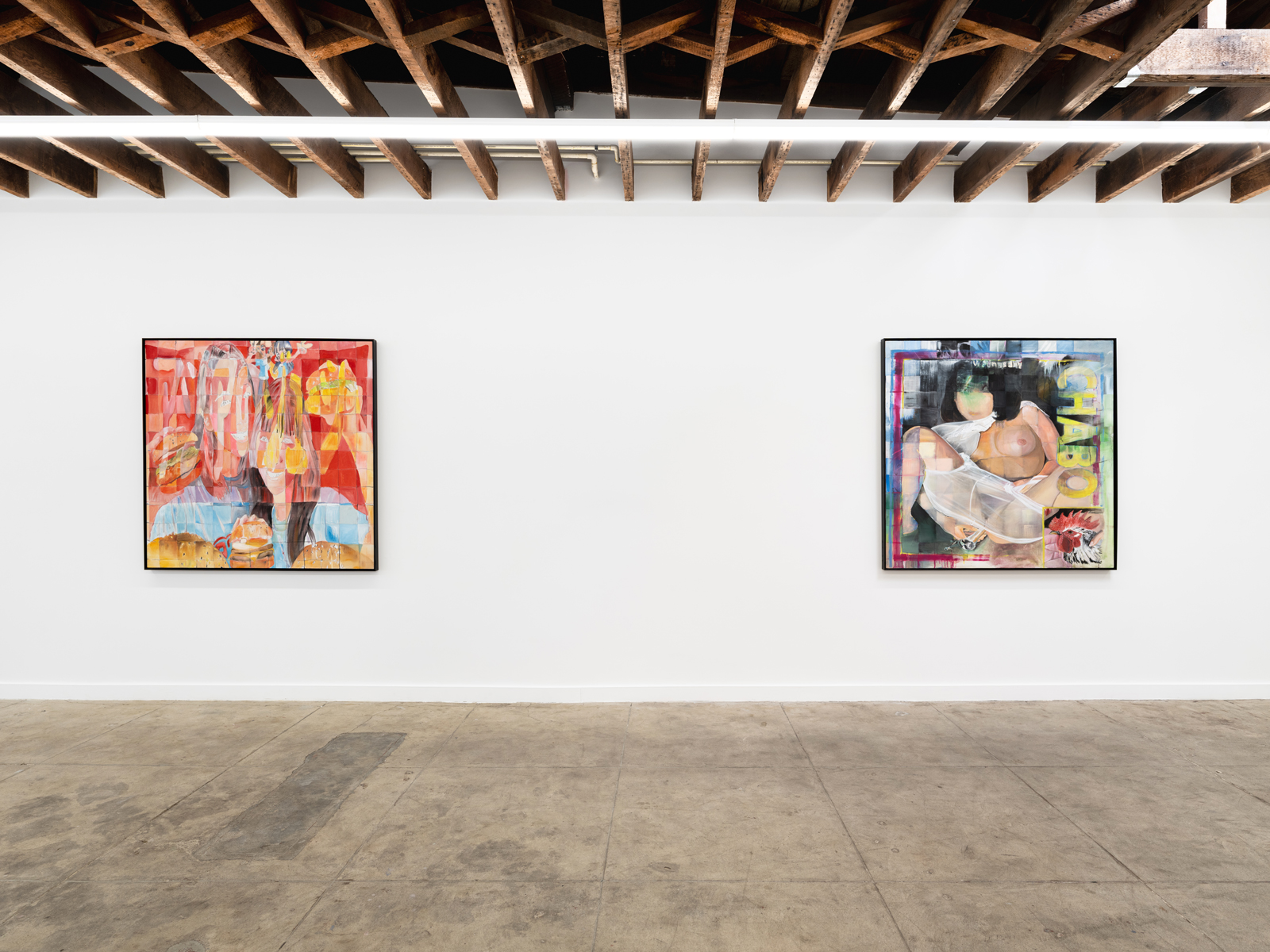
Exhibition view of Motoko Ishibashi: A Broken Net Has Fewer Holes, 2025. Cheremoya, Los Angeles.

Motoko Ishibashi, commercial zone i (chabo), 2025. Acrylic on canvas, 54 x 54 in / 137,2 x 137,2 cm
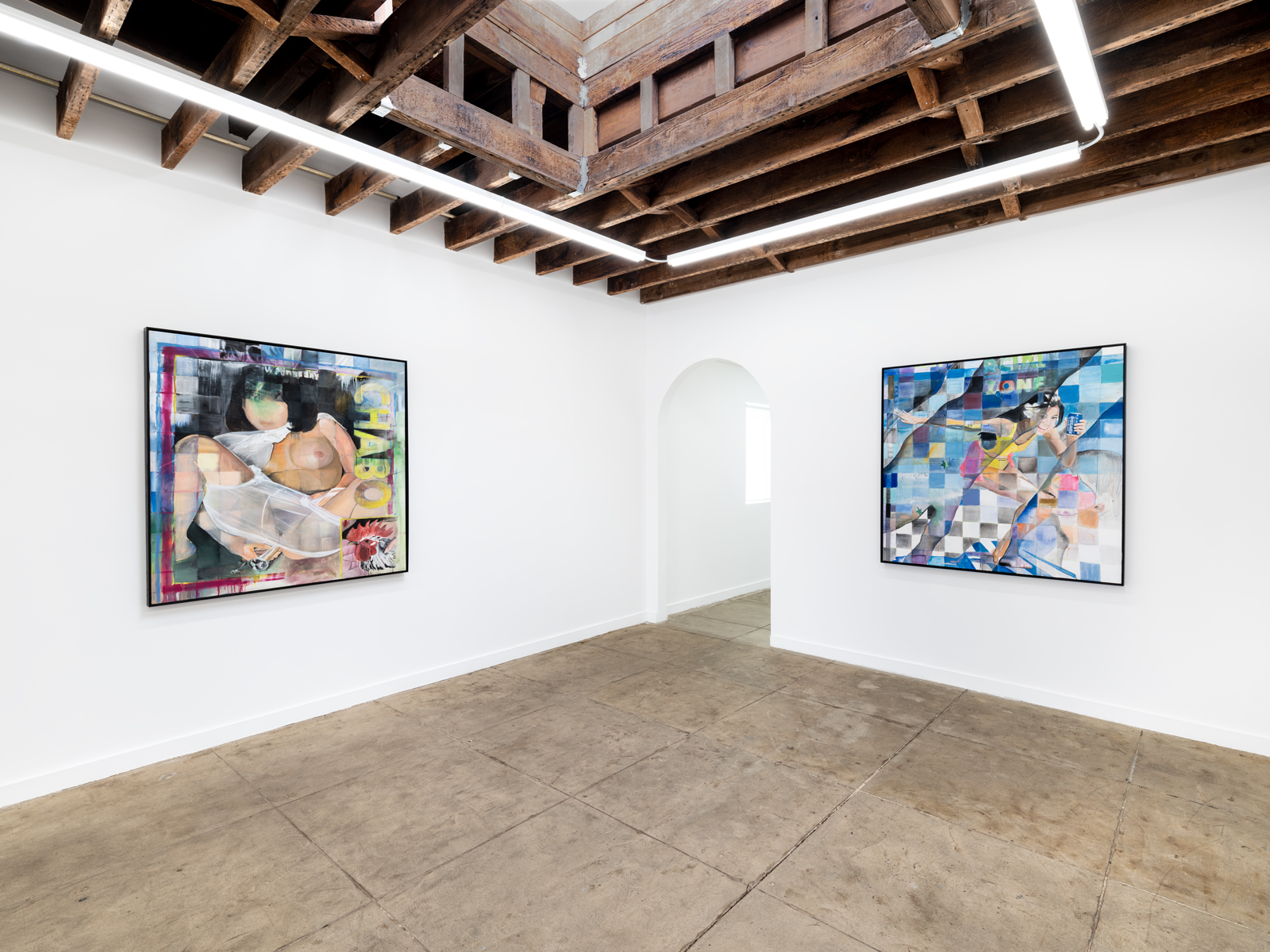
Exhibition view of Motoko Ishibashi: A Broken Net Has Fewer Holes, 2025. Cheremoya, Los Angeles.
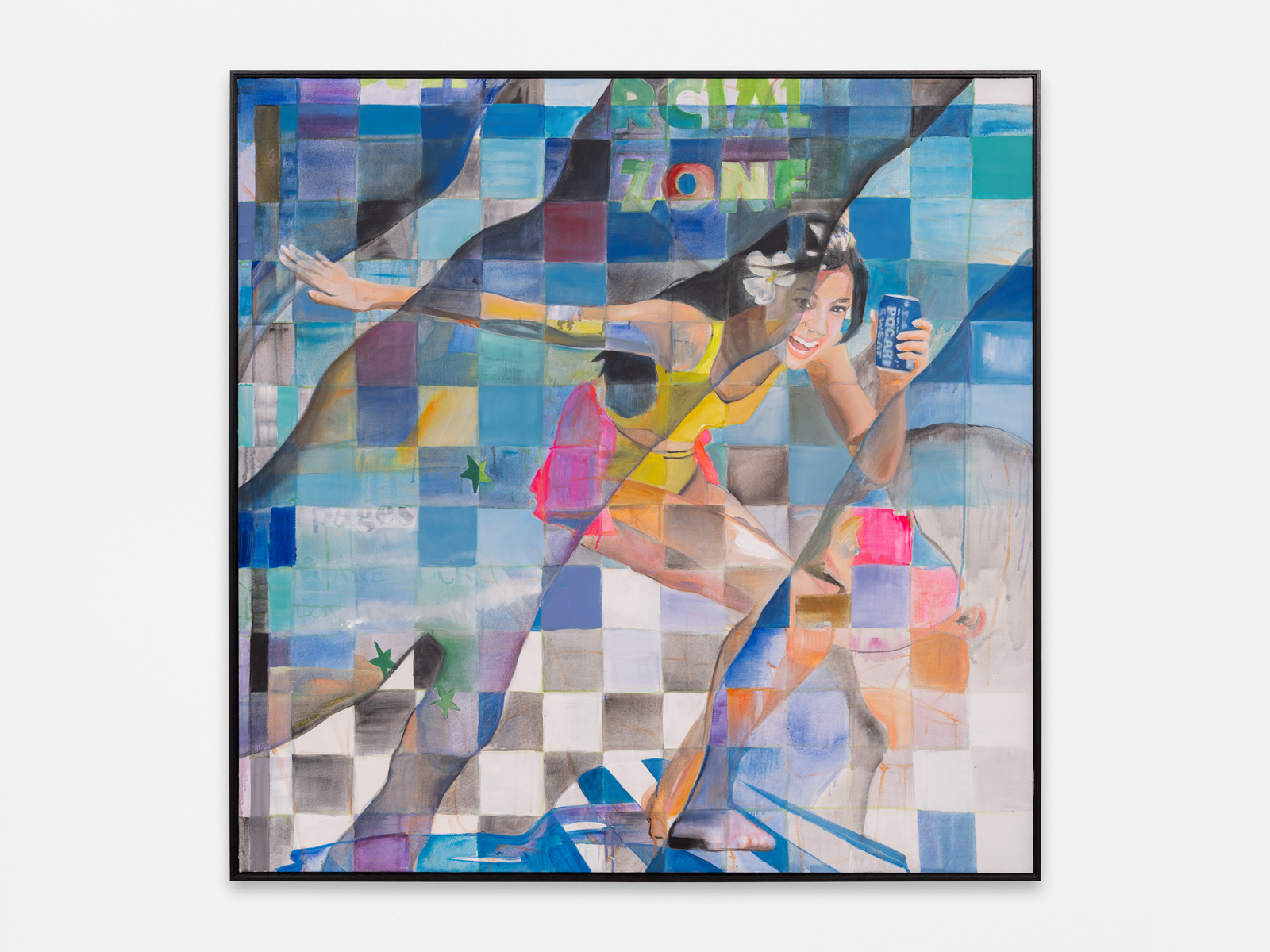
Motoko Ishibashi, commercial zone vi, 2025. Acrylic on canvas, 54 x 54 in / 137,2 x 137,2 cm
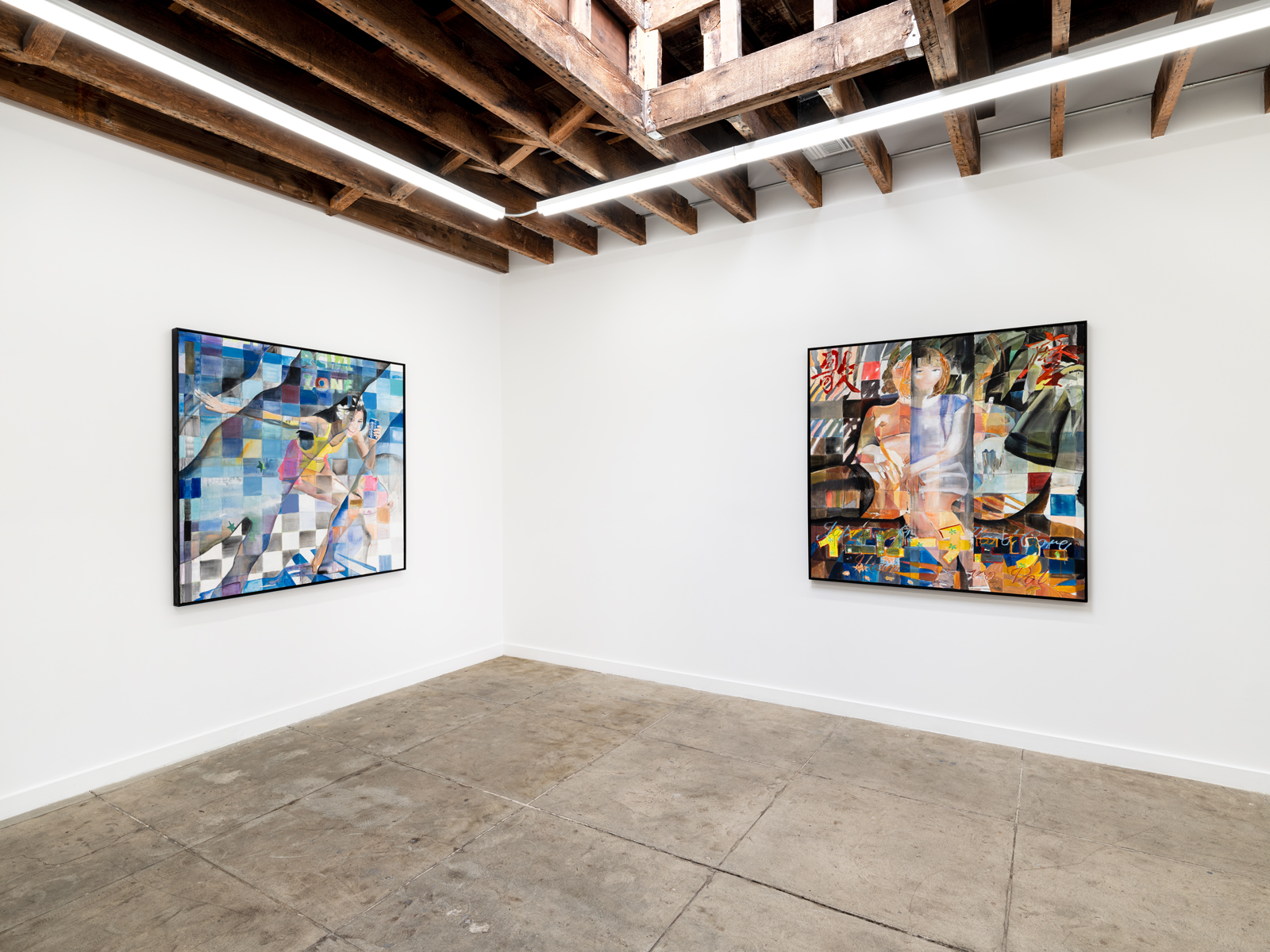
Exhibition view of Motoko Ishibashi: A Broken Net Has Fewer Holes, 2025. Cheremoya, Los Angeles.

Motoko Ishibashi, commercial zone iii (song and yellow cherry), 2025. Acrylic on canvas, 54 x 54 in / 137,2 x 137,2 cm
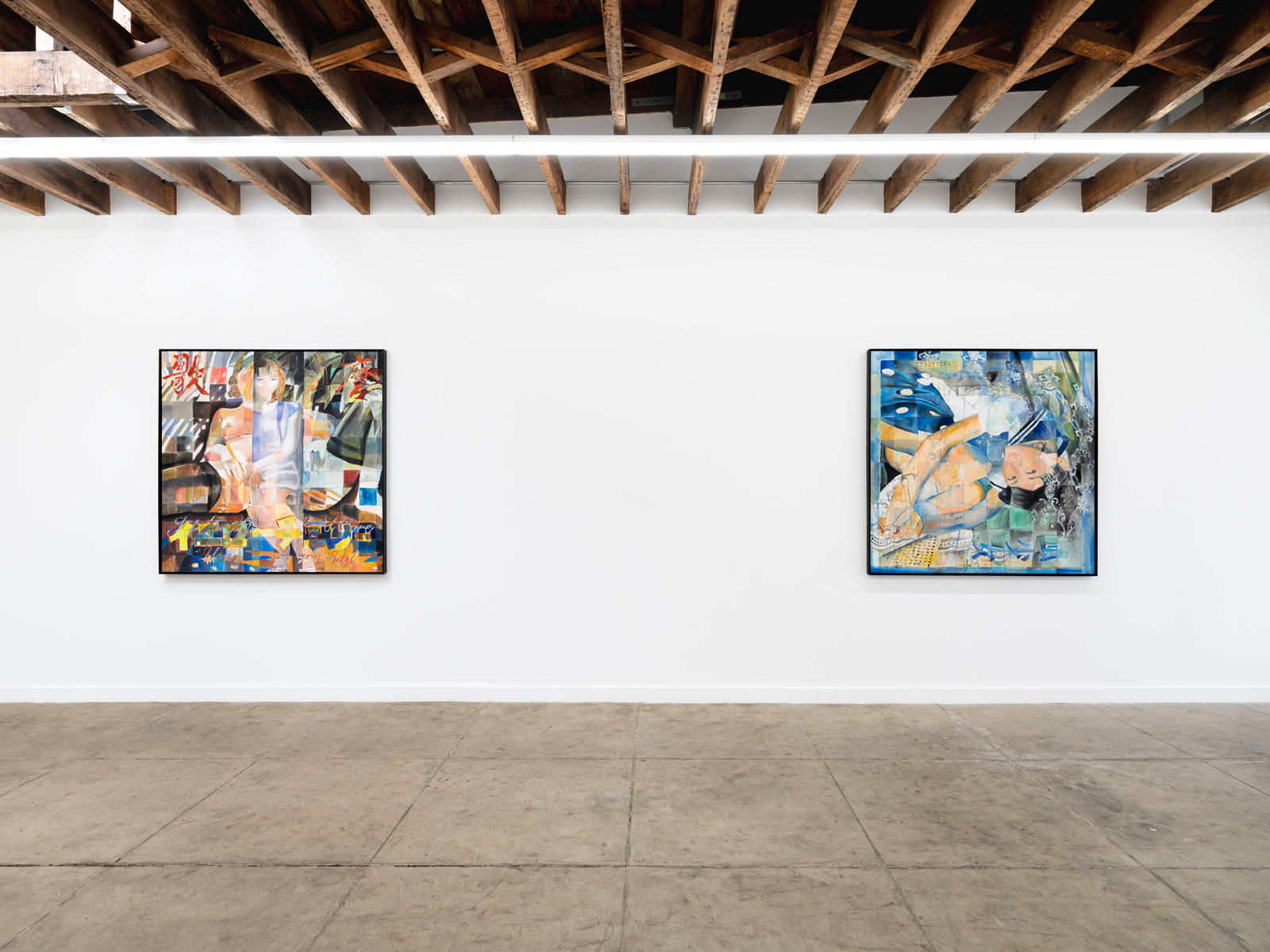
Exhibition view of Motoko Ishibashi: A Broken Net Has Fewer Holes, 2025. Cheremoya, Los Angeles.
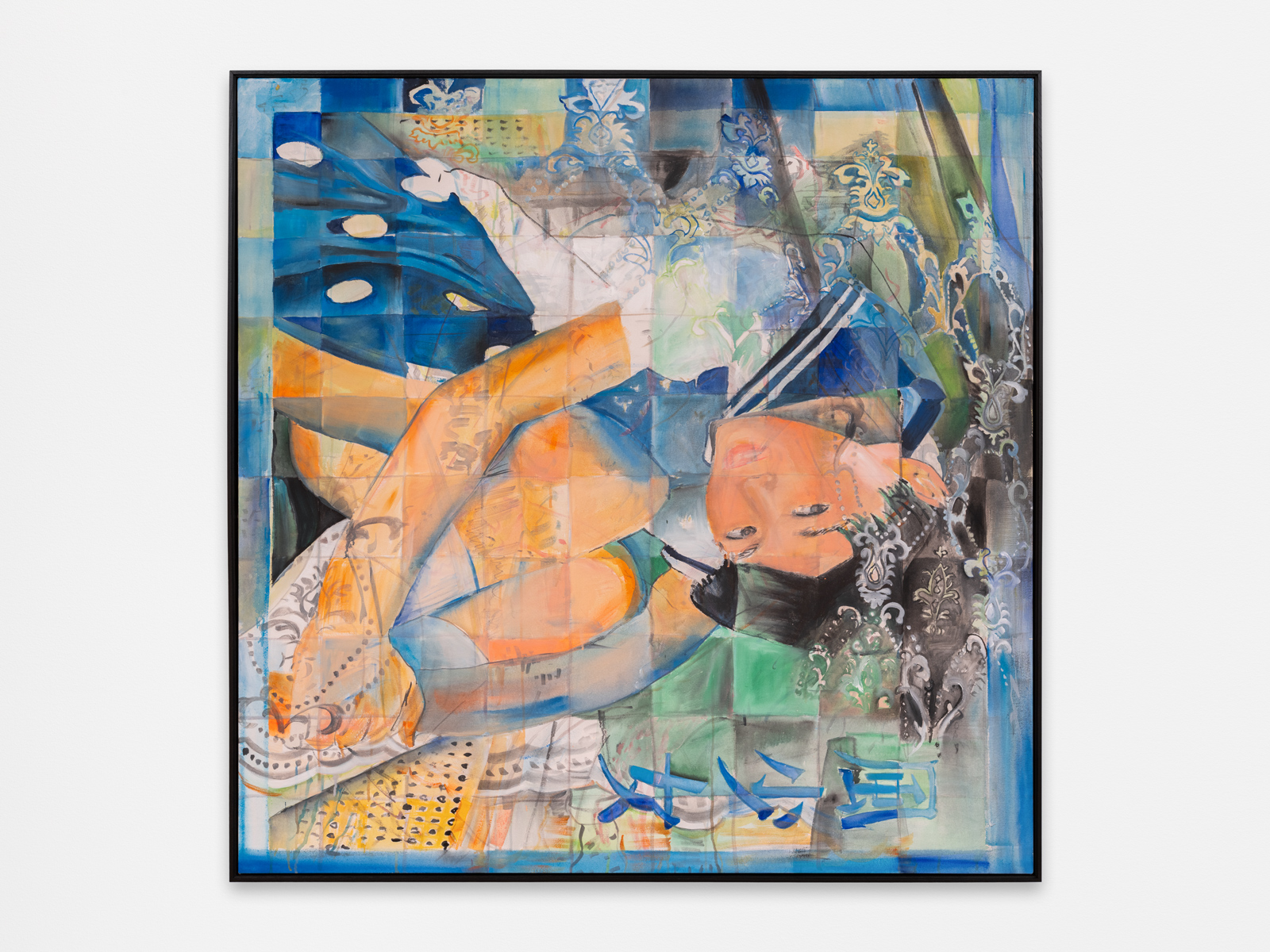
Motoko Ishibashi, commercial zone ii (wind, girl), 2025. Acrylic on canvas, 54 x 54 in / 137,2 x 137,2 cm
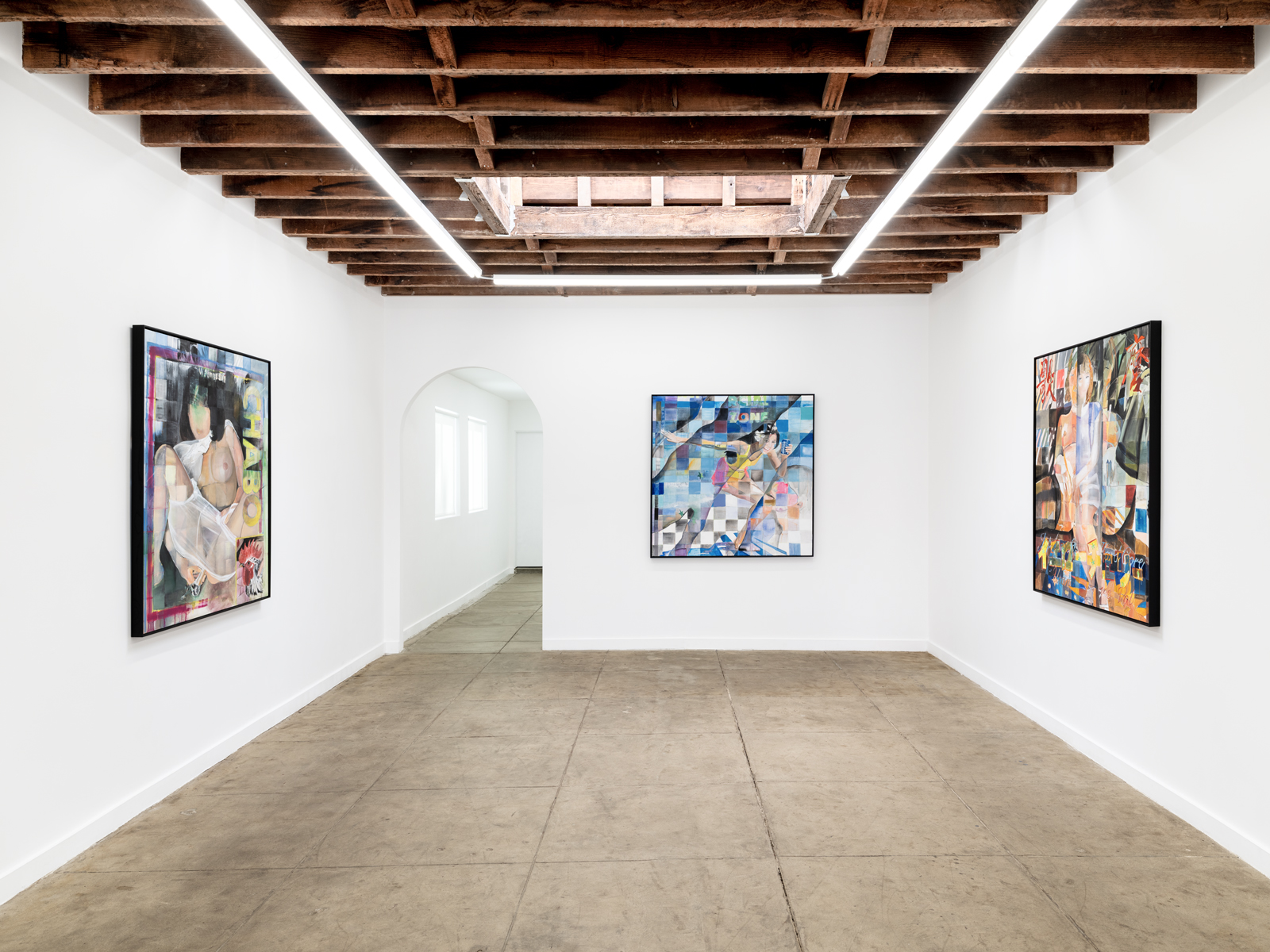
Exhibition view of Motoko Ishibashi: A Broken Net Has Fewer Holes, 2025. Cheremoya, Los Angeles.

Motoko Ishibashi, commercial zone v, 2025. Acrylic on canvas, 54 x 54 in / 137,2 x 137,2 cm
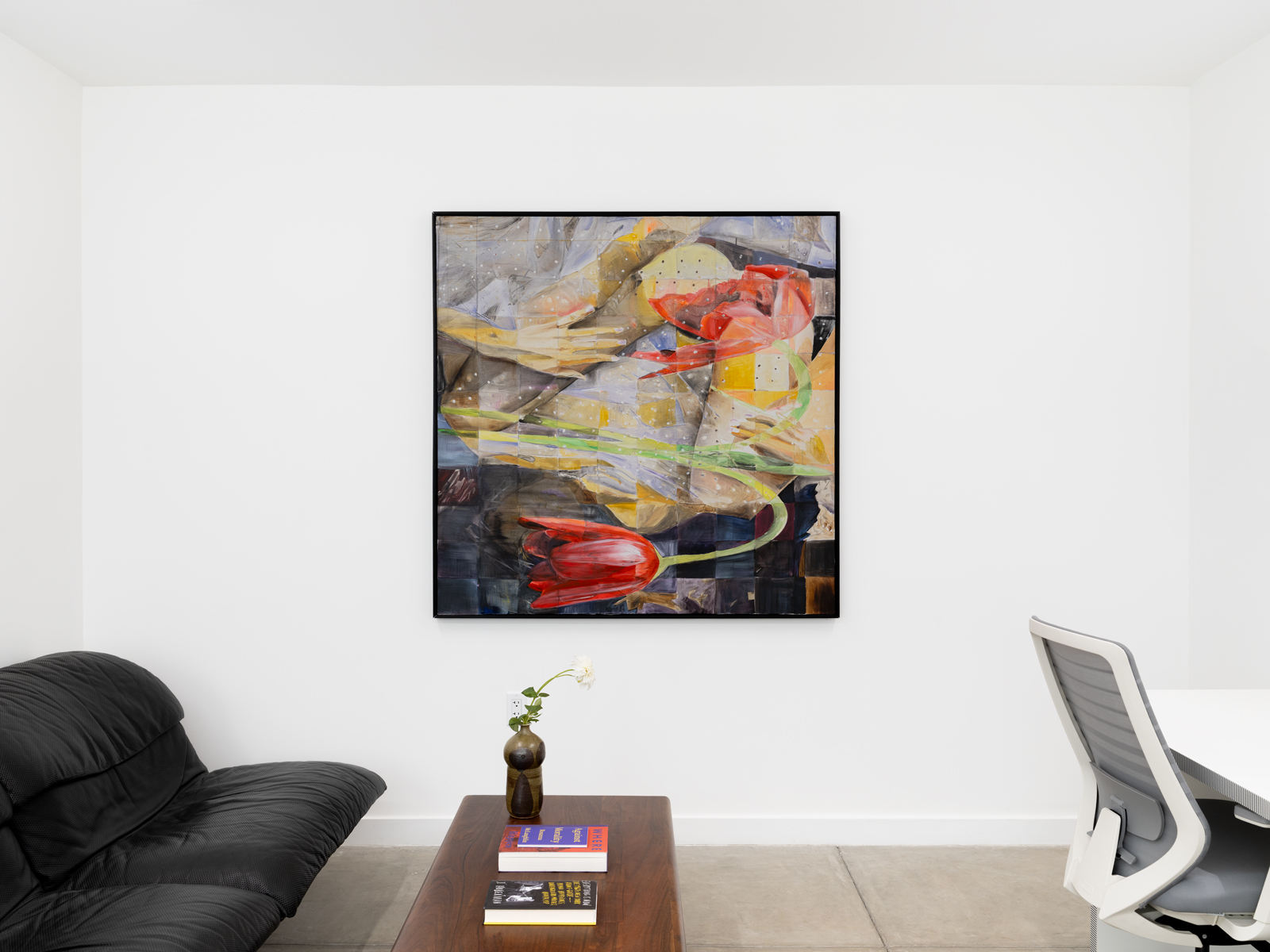
Exhibition view of Motoko Ishibashi: A Broken Net Has Fewer Holes, 2025. Cheremoya, Los Angeles.